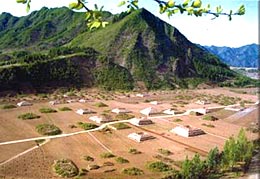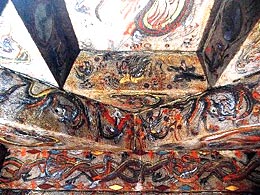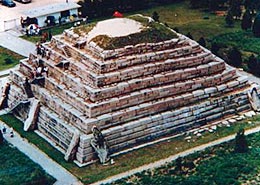The Capital Cities and Tombs of the Ancient Koguryo Kingdom
The Koguryo Kingdom (37 BC - AD 668.) is believed to be the longest regime founded by an ethnic minority people in northeast China and it played a big role in the development of Northeast Asia.
Though the kingdom collapsed over 1,300 years ago, relics of the kingdom remain in good condition. They include its capital city, fortifications, royal tombs and steles in today's Ji'an City, Jilin Province and the neighboring Huanren County of Liaoning Province.
 |
Its capital was originally built in Huanren in 37 BC, then called Wunu Mountain City. In AD 3, it was moved to Ji'an, called Guonei at that time, by the second Koguryo ruler.
Taking advantage of the local natural environment, the imperial cities developed their defense works with unique ethnic features, setting a good example in China's architectural history.
 |
The most famous relic in Ji'an is the Haotaiwang Stele inscribed with 1,775 Chinese characters, which was erected some 1,500 years ago. Experts believe it shows the impact of Chinese culture on the Koguryo, who did not have their own written language by the time.
Wandu City, on the mountain top some 2.5 km north of Guonei City, has seven city gates, forming the main defensive system in the region.
It was built in 198 and destroyed in 342. The city had served as a garrison city and twice as the provisional capital city.
 |
The murals are rich in contents, including lives of the noble families, such as feasting, dancing, drama-playing and outings. The murals were drawn on stone walls covered with lime.
Some of the earlier murals portray palaces, water wells, soldiers, maids, cattle and dogs, flowers and grasses and the sun and the moon.
When Buddhism was introduced into China, the designs of lotus began to appear in tomb murals.
Archeologists believe Koguryo cultural relics are of great historical value. The unique city structure represented by Guonei City and Wandu Mountain City heavily influenced the construction of later Koguryo capitals, while the Koguryo tombs provided outstanding examples of the evolution of piled-stone and earthen tomb construction. They demonstrate human creative genius in wall paintings and architecture.?
 |
 |
 |
(China.org.cn July 19, 2004)
 0
0 






